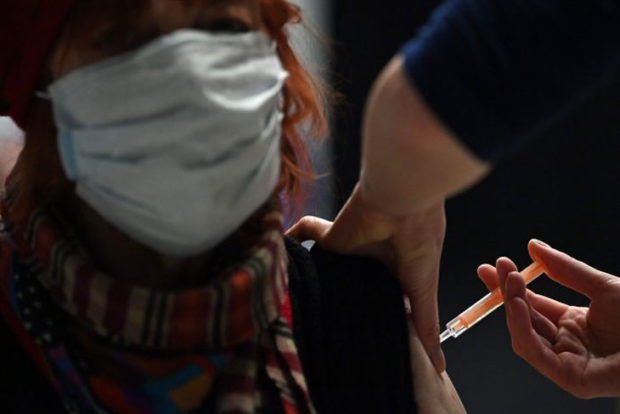
Most COVID deaths in England now are in the vaccinated – here’s why that shouldn’t alarm you
PTI, Jul 16, 2021, 10:32 AM IST

Bath (UK): More vaccinated people are dying of COVID than unvaccinated people, according to a recent report from Public Health England (PHE). The report shows that 163 of the 257 people (63.4%) who died of the delta variant within 28 days of a positive COVID test between February 1 and June 21, had received at least one dose of the vaccine. At first glance, this may seem alarming, but it is exactly as would be expected.
Here’s a simple thought experiment: imagine everyone is now fully vaccinated with COVID vaccines – which are excellent but can’t save all lives. Some people who get infected with COVID will still die. All of these people will be fully vaccinated – 100%. That doesn’t mean vaccines aren’t effective at reducing death.
The risk of dying from COVID doubles roughly every seven years older a patient is. The 35-year difference between a 35-year-old and a 70-year-old means the risk of death between the two patients has doubled five times – equivalently it has increased by a factor of 32. An unvaccinated 70-year-old might be 32 times more likely to die of COVID than an unvaccinated 35-year-old.
This dramatic variation of the risk profile with age means that even excellent vaccines don’t reduce the risk of death for older people to below the risk for some younger demographics.
PHE data suggests that being double vaccinated reduces the risk of being hospitalised with the now-dominant delta variant by around 96%. Even conservatively assuming the vaccines are no more effective at preventing death than hospitalisation (actually they are likely to be more effective at preventing death) this means the risk of death for double vaccinated people has been cut to less than one-twentieth of the value for unvaccinated people with the same underlying risk profile.
However, the 20-fold decrease in risk afforded by the vaccine isn’t enough to offset the 32-fold increase in underlying risk of death of an 70-year-old over a 35-year-old.
Given the same risk of infection, we would still expect to see more double-vaccinated 70-year-olds die from COVID than unvaccinated 35-year-olds. There are caveats to that simple calculation. The risk of infection is not the same for all age groups. Currently, infections are highest in the youngest and lower in older age groups.
Think of it as ball-bearing rain
One way to imagine the risk is as a rain of differently sized ball bearings falling from the sky, where the ball bearings are the people that get infected with COVID. For simplicity’s sake, let’s assume there are roughly equal numbers of ball bearings in each age group. In each age category, there is also a variation in the size of the balls. The balls representing the older groups are smaller, representing a higher risk of death.
Now imagine there’s a sieve that catches many of the balls. Most people who get COVID will not die (most balls get caught in the sieve). But some of the smaller balls fall through. The older you are, the more likely you are to fall through the holes. The balls that make it through the first sieve are hugely skewed towards older age ranges, represented by the smaller ball bearings. Before COVID vaccines came along, the people that fell through the holes represented the people who would die of COVID. The risk was massively skewed towards older people.
Vaccination provides a second sieve underneath the first, to prevent people from dying. This time, because we haven’t vaccinated everyone, it’s the holes in the sieve that are of different sizes. For older people who’ve had both doses, the holes are smaller, so many ball-bearings are stopped. The vaccines will save many of those who would previously have died.
For younger people the holes in the vaccine sieve are currently bigger as they are less likely to have received both doses and so more likely to fall through the sieve.
If all the filtering were just done by the second sieve (with no skew in risk of death by age, represented by the first sieve), then we might expect younger unvaccinated people to account for a larger proportion of the deaths. But it isn’t. The first sieve is so hugely biased towards older people that even with vaccination, more of them slip through the second sieve than the younger unvaccinated people.
Given the UK’s vaccination strategy (vaccinate older, more vulnerable people first), you would expect high proportions of the people who die from COVID to have been vaccinated. And that is exactly what we see in the data.
The fact that more vaccinated people are dying than unvaccinated people does nothing to undermine vaccine safety or effectiveness. In fact, it’s exactly what we’d expect from the excellent vaccines, which have already saved tens of thousands of lives.
By Christian Yates, University of Bath
The Conversation
Udayavani is now on Telegram. Click here to join our channel and stay updated with the latest news.
Top News

Related Articles More

Plant-based meat alternatives linked to increased risk of depression in vegetarians, study finds

Lung transplant at right time only cure for idiopathic pulmonary fibrosis that killed Ustad Zakir Hussain

ICMR sets up India’s first diabetes biobank in Chennai

AI Meets Health: The Rise of Smart Fitness Solutions

New study links paracetamol to side effects in digestive tract, heart, kidneys among older adults
MUST WATCH
Latest Additions

Assembly clears Mysuru Development Authority Bill

Blocked 18 OTT platforms for publishing obscene, vulgar content: Govt

Boy critically injured after tree branch falls on him in Bengaluru

Congress claims party worker ‘died due to tear gas smoke’ during protest in Assam

Four dead in road accident in Kolar
Thanks for visiting Udayavani
You seem to have an Ad Blocker on.
To continue reading, please turn it off or whitelist Udayavani.



















